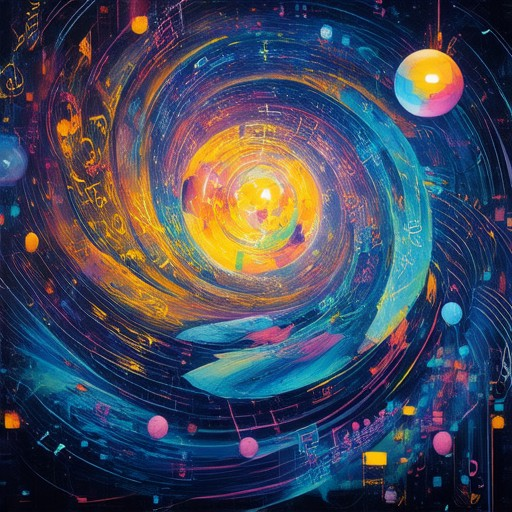Stay ahead with the latest music trends news and uncover the biggest shifts shaping the industry. From emerging genres to viral hits, the world of music is constantly evolving, driven by innovative artists, technological advancements, and shifting consumer preferences. Whether you’re a fan of mainstream pop or a enthusiast of niche genres, there’s always something fresh to discover. In this comprehensive guide, we’ll explore the hottest music trends, analyze the impact of streaming platforms, and dive into the innovations reshaping the art of music. Get ready to stay informed and inspired as we reveal the most exciting developments in the ever-changing landscape of music.

What is the Newest Trend in Music?
The music landscape is constantly evolving, with fresh trends emerging every year. As of 2025, one of the most notable trends is the integration of artificial intelligence in music production and composition. Platforms like 1 Nation Entertainment are leveraging AI tools to create unique sounds and compositions, often resulting in unprecedented creativity and efficiency.
- AI-Driven Music Production: Artists are increasingly utilizing AI tools to experiment with sounds, beats, and melodies. This technology allows for the creation of intricate and personalized tracks that would be difficult to produce manually. Platforms like 1 Nation Entertainment are at the forefront of this movement, offering resources and tools for creators to explore AI-generated music.
- TikTok Influencers Shaping Charts: While social media platforms have always played a role in shaping music trends, TikTok has become particularly influential in recent years. Viral songs and challenges originating from the app frequently climb the charts, influencing what audiences around the world listen to. This trend continues to dominate, with many artists relying on TikTok to gain mainstream attention.
- Vinyl Revival Continues: Despite the convenience of digital music, vinyl records have seen a significant resurgence. Collectors and audiophiles alike appreciate the tactile experience and high-fidelity sound quality that vinyl offers. Record stores and vinyl-only releases are becoming more popular, catering to fans who value the nostalgic and collectible nature of physical media.
- Genre Blending and Fusion: Musicians are pushing boundaries by combining genres that were traditionally separate. For instance, the fusion of lo-fi and jazz, or the merging of electronic beats with classical instruments, creates unique sounds that defy conventional categories. This trend emphasizes innovation and artistic freedom, allowing creators to explore uncharted territories.
- Sustainability in Music Production: The music industry is increasingly focusing on eco-friendly practices. From sustainable recording techniques to carbon-neutral tours, artists and labels are striving to minimize their environmental impact. This trend aligns with broader movements toward environmental consciousness and reflects the growing concern among music fans.
These trends highlight the dynamic nature of the music industry, continually responding to changes in technology, culture, and consumer preferences. By embracing these advancements, artists and platforms like 1 Nation Entertainment are shaping the future of music and ensuring its continued evolution.
What Music is Trending Now?
We’re living in an era where music trends shift rapidly, driven by streaming platforms, social media, and global events. Here’s a snapshot of what’s currently popular:
Popular Genres
- Pop & Rock : Dominating the charts with catchy melodies and high-energy beats.
- Hip-Hop/R&B : Powerful basslines and soulful vocals continue to captivate audiences.
- Electronic Dance Music (EDM) : Festivals and late-night playlists keep this genre alive.
- Latin Music : From reggaeton to bachata, it’s taking over global stages.
Regional Charts
- United States : Billie Eilish, Olivia Rodrigo, and Doja Cat lead the pack.
- Europe : Artists like Dua Lipa and The Weeknd are making waves.
- Asia : K-pop groups like BTS and Blackpink remain dominant.
- Latin America : Bad Bunny and Shakira keep the momentum going.
Streaming Platforms
- Spotify : Top tracks include “Billie’s World” by Billie Eilish and “Midnight Moon” by The Weeknd.
- Apple Music : Features Taylor Swift’s “Shake Off” and Drake’s “Hotline Bling.”
- YouTube Music : Viral hits like “Tik Tok” by Becky G and “Don’t Say My Name” by The Kid LAROI.
Notable Tracks
- “Superman” by Sam Smith
- “I Like It What I See” by Doja Cat
- “Levitating” by Dua Lipa
- “Butterfly” by Sia
Where to Find More
Explore the latest trends on 1 Nation Entertainment and check out our curated playlists for a diverse listening experience. Don’t forget to follow your favorite artists and stay updated with the latest releases.

Music Trends Among Generation Z
Generation Z, often referred to as Gen Z, has developed its own unique music preferences and trends. Here are some key aspects of the music scene among this generation:
- Genre Blending: Gen Z listeners enjoy a mix of various music genres, including lo-fi beats, hyperpop, indie rock, and trap music. They often blend these genres to create unique sounds that reflect their diverse tastes.
- TikTok Influence: Platforms like TikTok have significantly influenced music trends, with many songs and artists gaining popularity due to viral videos and challenges. Gen Z frequently discovers new music through these platforms.
- Collective Culture: Many Gen Z listeners prefer supporting collectives and collaborative projects over individual artists. Groups like Brockhampton and The 1975 have gained massive followings for their collective efforts.
- Nostalgia for Vinyl: While Gen Z grew up in the digital age, there’s a resurgence of interest in vinyl records and cassette tapes, with many fans collecting physical copies of their favorite tracks.
- Virtual Concerts: Due to the pandemic, live performances have shifted to virtual events. Gen Z has embraced this shift, attending online concerts and festivals from around the world.
- Fashion-Driven Music: Many Gen Z musicians and fans merge music with fashion, creating unique styles that match their musical preferences. This trend is evident in the rise of genre-specific fashion statements.
These trends highlight the dynamic and evolving music taste of Generation Z, which continues to shape the global music industry.

What is the Biggest Trend in the Music Industry?
- Streaming Dominance: Platforms like Spotify, Apple Music, and YouTube Music continue to dominate the music consumption landscape, driving innovation in personalized playlists and algorithmic recommendations.
- AI-Driven Curation: AI technology is revolutionizing music discovery, enabling listeners to explore new artists and genres based on their unique preferences and behavior patterns.
- Immersive Audio Experiences: Spatial audio and virtual reality (VR) are transforming how music is consumed, offering fans a more immersive and interactive experience.
- Rise of Regional and Independent Artists: The music industry is seeing a surge in popularity for regional artists and independent labels, driven by platforms like TikTok and Instagram that amplify niche sounds.
- Sustainability in Music Production: Artists and labels are increasingly adopting eco-friendly practices to reduce their carbon footprint, from sustainable recording techniques to carbon-neutral tours.
The Big Three in the Music Industry
The music industry is dominated by three major record labels that collectively shape the landscape of music production, distribution, and artist management. These labels play pivotal roles in shaping trends, influencing marketing strategies, and driving innovation in the industry.
Sony Music Entertainment
Sony Music Entertainment is one of the most prominent major labels, renowned for its extensive catalog of artists and its influence across various music genres. With a rich history dating back several decades, Sony has been instrumental in shaping the careers of iconic figures like Michael Jackson, Beyoncé, and Bruce Springsteen. Beyond artist representation, Sony is also a leader in music publishing and holds significant stakes in film soundtrack rights.
Universal Music Group
Universal Music Group is another titan of the music industry, known for its diverse roster of artists and its global reach. UMG has been a pioneer in international expansion and has played a crucial role in the success of artists like Taylor Swift, Drake, and Justin Bieber. The group also owns a substantial number of sub-labels, allowing it to cater to various niche markets and genres.
Warner Music Group
Warner Music Group completes the trio as one of the “big three” labels. Known for its independence from larger media conglomerates, Warner has maintained a strong identity and has been home to successful artists such as Ed Sheeran, Bruno Mars, and Lady Gaga. The label emphasizes artist-centric approaches and has a significant presence in live music touring and event production.
Competitors and Market Influence
While Sony, Universal, and Warner are the dominant forces, the music industry also features notable independent labels and smaller competitors. Companies like Atlantic Records and Def Jam have carved out unique niches and contributed significantly to the genre-defining sounds of modern music. The big three labels, however, continue to hold a disproportionate influence over the global music scene, shaping trends, distribution channels, and marketing strategies.
As of 2025, these three labels remain the primary powerhouses in the music industry, driving innovation and setting standards for artist development and commercial success. Their collective impact extends far beyond music production, influencing文化趋势、市场策略和产业发展方向。

What is the Biggest Problem in the Music Industry?
The music industry faces several significant challenges, each impacting various aspects of the business. Here are some of the most pressing issues:
- Declining Revenue for Artists and Labels: With the rise of streaming platforms, artists and record labels often struggle to earn fair compensation due to low royalty rates and complex licensing agreements. This has led to widespread financial struggles among creators.
- Monopolization of Streaming Platforms: A small number of dominant platforms control the majority of music distribution and streaming, limiting options for independent artists and reducing competition, which can stifle innovation and diversity in the industry.
- Issue of Piracy and Illegal Streaming: Piracy remains a major threat, leading to significant financial losses for artists and labels. Despite efforts to combat it, illegal streaming continues to harm the music ecosystem.
- Artist Independence and Unionization: Many artists feel undervalued and lack representation, leading to calls for greater unionization efforts to secure better deals and protect their rights. This issue has gained momentum with the rise of social media and streaming platforms.
- Sustainability and Longevity of the Industry: The music industry is facing an existential crisis due to changing consumer behaviors, technological disruptions, and shrinking profit margins. This threatens the future of music production and creative expression.
These challenges highlight the need for systemic changes in how the music industry operates, including better compensation models, stronger anti-piracy measures, and support for independent creators. Addressing these issues is essential for the continued growth and health of the music industry.




